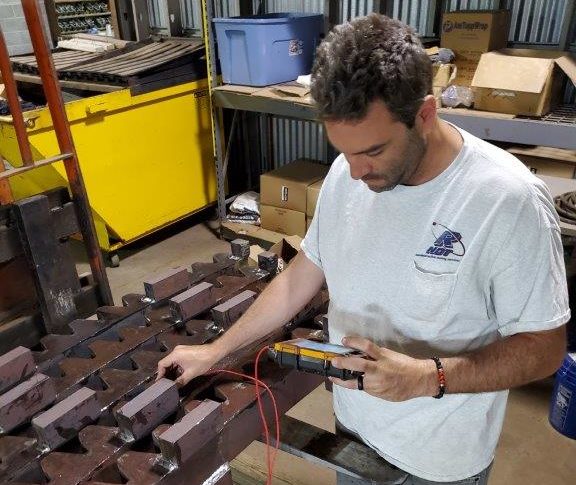 Ultrasonic Testing uses the transmission of high frequency sound waves into a material to detect imperfections within the material or changes in material properties. RNDT’s Level II and Level III certified UT technicians work to many codes in many industries. From thickness readings on ASTs to performing full length ultrasonic examinations on 40′ long seamless pressure vessels.
Ultrasonic Testing uses the transmission of high frequency sound waves into a material to detect imperfections within the material or changes in material properties. RNDT’s Level II and Level III certified UT technicians work to many codes in many industries. From thickness readings on ASTs to performing full length ultrasonic examinations on 40′ long seamless pressure vessels.
The most commonly used ultrasonic testing technique is pulse echo wherein sound is introduced into the test object and reflections (echos) are returned to a receiver from internal imperfections or from geometrical surfaces of the part.
Have a question?
Talk to an RNDT Level III inspector for free.
Call 1-800-505-7638 today!
History
In Ultrasonic Testing (UT), very short ultrasonic pulse-waves with center frequencies ranging from 0.1-15 MHz and occasionally up to 50 MHz are launched into materials to detect internal flaws or to characterize materials. The technique is also commonly used to determine the thickness of the test object, for example, to monitor pipework corrosion.
Ultrasonic testing is often performed on steel and other metals and alloys, though it can also be used on concrete, wood and composites, albeit with less resolution. It is a form of non-destructive testing used in many industries including aerospace, automotive and other transportation sectors.
How it works
In ultrasonic testing, an ultrasound transducer connected to a diagnostic machine is passed over the object being inspected. The transducer is typically separated from the test object by a couplant (such as oil) or by water, as in immersion testing.
There are two methods of receiving the ultrasound waveform, reflection and attenuation. In reflection (or pulse-echo) mode, the transducer performs both the sending and the receiving of the pulsed waves as the “sound” is reflected back to the device. Reflected ultrasound comes from an interface, such as the back wall of the object or from an imperfection within the object. The diagnostic machine displays these results in the form of a signal with an amplitude representing the intensity of the reflection and the distance, representing the arrival time of the reflection. In attenuation (or through-transmission) mode, a transmitter sends ultrasound through one surface, and a separate receiver detects the amount that has reached it on another surface after traveling through the medium. Imperfections or other conditions in the space between the transmitter and receiver reduce the amount of sound transmitted, thus revealing their presence. Using the couplant increases the efficiency of the process by reducing the losses in the ultrasonic wave energy due to separation between the surfaces.
